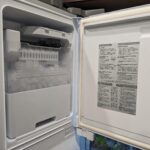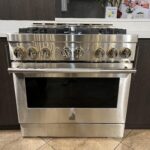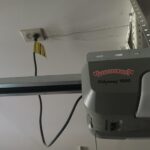Imagine lying beneath a crystal-clear skylight, watching the sky shift from sunrise to sunset. It’s a serene experience, isn’t it?
But have you ever wondered about the glass above you? When it comes to skylights, not all glass is created equal. Choosing between tempered and laminated glass can feel like a daunting task, but it doesn’t have to be. Understanding the differences can transform your space, boost your home’s safety, and even save you money.
If you’re ready to make an informed decision about your skylight, you’re in the right place. Discover which type of glass meets your needs and why it matters more than you might think. Dive into the details that could change the way you view skylights forever.
Key Differences
Tempered glass skylights offer excellent strength, resisting scratches and breaks. Laminated glass skylights prioritize safety by preventing shattering and reducing noise. Both options provide unique benefits for durability and protection.
When considering skylights for your home, understanding the key differences between tempered and laminated glass can help you make a well-informed decision. Both types offer distinct benefits and drawbacks. Knowing these differences will guide you in choosing the right skylight for your needs and preferences.Material Composition
Tempered glass is a type of safety glass that is designed to be stronger than standard glass. It undergoes a special heating and rapid cooling process, which makes it more durable. If broken, it shatters into small, blunt pieces, reducing the risk of injury. Laminated glass, on the other hand, consists of two or more layers of glass with a plastic interlayer. This interlayer holds the glass together when shattered. This feature prevents shards from scattering, maintaining a barrier even when broken. Do you live in an area prone to severe weather? Laminated glass might be your best bet due to its added security. However, if you’re more concerned with cost and don’t anticipate frequent impacts, tempered glass could be a suitable choice.Manufacturing Process
Tempered glass is created through a thermal tempering process. The glass is heated to over 600 degrees Celsius and then rapidly cooled. This process increases its strength but also makes it more susceptible to stress and imperfections during cutting. Laminated glass involves bonding layers of glass with a polyvinyl butyral (PVB) or ethylene-vinyl acetate (EVA) film. The layers are pressed together and heated to ensure they adhere properly. This process allows for various combinations of thickness and can even include specialized films for UV protection. Have you ever noticed how your car windshield remains intact after a minor accident? That’s laminated glass at work. Its ability to withstand force without breaking apart makes it ideal for security-conscious homeowners. Choosing between tempered and laminated glass often boils down to your personal priorities. Do you prioritize safety over cost, or is the strength and price balance more important to you? Understanding these key differences will help you make a choice that fits your lifestyle and needs.Strength And Durability
When deciding between tempered and laminated glass for your skylight, understanding strength and durability is crucial. Each type offers unique benefits, tailored to different needs. From impact resistance to weather resilience, knowing what each glass type brings to the table can help you make an informed decision.
Impact Resistance
Have you ever accidentally dropped a heavy object on glass? The result can be catastrophic. Tempered glass is designed to handle such impacts. It’s toughened through a heating and rapid cooling process, making it up to four times stronger than regular glass. When it breaks, it shatters into small, harmless pieces, reducing injury risk.
Laminated glass, on the other hand, consists of two or more layers bonded with a plastic interlayer. This construction makes it less likely to shatter on impact. Even if the glass cracks, the interlayer holds the pieces together, making it ideal for areas where safety is paramount.
Weather Resilience
Imagine a sudden hailstorm pounding on your skylight. You need glass that can withstand extreme weather conditions. Tempered glass excels in this aspect due to its toughened nature. It can handle wind, snow, and hail with ease, providing peace of mind during a storm.
Laminated glass offers added weather resilience due to its interlayer. This feature not only keeps the glass intact but also provides UV protection, reducing fading of furniture and fabrics inside your home. It’s a practical choice if you live in an area prone to harsh weather or intense sunlight.
Which type of glass aligns with your needs? Consider the unique conditions of your environment and the level of safety you desire. Whether facing the fury of nature or the unpredictability of accidents, choosing the right glass can significantly impact your home’s safety and longevity.
Safety Features
Tempered glass skylights offer high impact resistance and durability, while laminated glass enhances safety with its shatter-resistant design. Both types provide excellent protection, ensuring peace of mind for homeowners.
When considering skylights for your home, safety is a top priority. Tempered and laminated glass both offer unique safety features, but which is best for you? Understanding these features can guide you in making an informed choice. Let’s dive into the specifics of how each type of glass handles safety concerns.Shattering Patterns
Tempered glass is designed to shatter into small, blunt pieces rather than sharp shards. This reduces the risk of injury if the glass breaks. Imagine a car window breaking—that’s how tempered glass behaves. Laminated glass, on the other hand, holds together even when shattered. Think of your car windshield; it cracks but stays intact. This characteristic makes it ideal for preventing objects or people from falling through.Protection Against Breakage
Tempered glass is heated and cooled rapidly during manufacturing, making it four to five times stronger than regular glass. This process makes it resistant to impact and thermal stress, giving you peace of mind during storms or accidents. Laminated glass consists of layers with a plastic interlayer. This construction makes it difficult to break through, offering excellent protection against break-ins. It’s like having an extra shield over your skylight. So, which glass type aligns with your safety priorities? Is preventing injuries more crucial, or is keeping the glass intact your focus? Understanding these differences can help you choose the right skylight for your home’s safety needs.Thermal Insulation
Thermal insulation in skylights plays a crucial role in home comfort. It affects how heat is retained or lost through the glass. Choosing the right skylight glass can impact energy bills and indoor temperature.
Heat Retention
Tempered glass provides moderate heat retention. It minimizes heat loss during cold months. This helps keep indoor spaces warm and cozy. Laminated glass offers superior heat retention. It consists of layers that trap heat efficiently. This makes it ideal for colder climates.
Energy Efficiency
Energy efficiency is vital for reducing heating and cooling costs. Laminated glass skylights often outperform tempered ones. They maintain a stable indoor temperature. This reduces the need for constant heating or cooling. Tempered glass skylights can still be energy-efficient. They are often more affordable and easier to install. Consider your climate and budget when choosing.
Cost Comparison
Tempered glass skylights are often more affordable than laminated options. Laminated glass offers better durability and safety features. Cost varies based on thickness and size, with tempered glass typically being less expensive.
Choosing between tempered and laminated glass for your skylight can be a tricky decision, especially when it comes to cost. While both options have their pros and cons, understanding the cost implications can help you make an informed choice. Let’s break down the cost factors by examining the initial investment and the long-term value of each option.Initial Investment
The initial cost of a skylight can be a significant factor in your decision-making process. Tempered glass is generally more affordable upfront. It’s often the go-to choice for those on a budget. You might find yourself leaning toward this option if you’re looking for a more wallet-friendly installation. On the other hand, laminated glass tends to cost more initially. This is due to the extra layers and added safety features it provides. If you value enhanced durability and security, you might see this as a worthwhile investment despite the higher initial cost.Long-term Value
When considering the long-term value, think about durability and maintenance. Laminated glass often offers better value over time. It’s more resistant to impact and holds together even when broken, reducing the need for frequent replacements. Tempered glass, while strong, can shatter more easily under stress. This might lead to more frequent replacements, adding up in cost over the years. Have you considered the potential savings in maintenance and replacements? Reflect on your priorities and lifestyle. If you’re planning to stay in your home for many years, investing in laminated glass might pay off in the long run. However, if you’re looking for a quick, budget-friendly update, tempered glass could still be a viable option.
Credit: artisticskylight.com
Aesthetic Considerations
Choosing between tempered and laminated glass for skylights involves aesthetic considerations. Tempered glass offers a sleek, modern look, while laminated glass provides a softer, diffused light. Each type creates a distinct atmosphere, enhancing your space uniquely.
When choosing the right skylight for your space, aesthetics play a vital role. Skylights should not only brighten your room but also enhance its beauty. The choice between tempered and laminated glass skylights can greatly influence this aesthetic appeal. Let’s explore the aesthetic considerations in terms of design flexibility, transparency, and clarity.Design Flexibility
Tempered glass offers a wide range of design options. It can be tailored to various shapes and sizes. This flexibility allows for creative architectural designs. Laminated glass also offers design possibilities. It can incorporate different patterns and colors. Yet, it may have limitations in certain complex shapes. Choosing between these two depends on design needs.Transparency And Clarity
Tempered glass is known for its high transparency. It lets in more natural light, brightening interiors. This clarity enhances the visual experience. Laminated glass, on the other hand, provides moderate transparency. It can sometimes appear slightly cloudy. This might affect how light filters through. Both options serve different aesthetic preferences.Installation Challenges
Choosing between tempered and laminated glass skylights presents unique installation challenges. Tempered glass is strong but can shatter into small pieces, requiring careful handling. Laminated glass offers durability and safety but needs precise installation to avoid sealing issues. Balancing these factors ensures a successful skylight project.
Installing a skylight can transform any room, flooding it with natural light and creating a sense of openness. However, the process comes with its own set of challenges, especially when choosing between tempered and laminated glass skylights. Understanding these challenges can save you time and money, while ensuring your skylight is both beautiful and functional. As someone who recently installed a skylight in my home, I discovered the importance of considering structural requirements and maintenance needs.Structural Requirements
Installing a skylight is not as simple as cutting a hole in the roof and fitting the glass. The structural integrity of your roof must be assessed to ensure it can support the skylight. Tempered glass is strong and shatters into small, less dangerous pieces, but it might require additional support to prevent flexing. Laminated glass, on the other hand, holds together when shattered, making it ideal for larger installations that might lack extra support. During my installation, I realized my roof’s slope could affect water drainage. This was a crucial consideration, as poor drainage can lead to leaks. Have you checked if your roof’s structure can accommodate a skylight without compromising safety?Maintenance Needs
Keeping your skylight in good condition requires regular maintenance. Tempered and laminated glass each have unique needs that can affect your decision. Tempered glass is less prone to scratches, making it easier to clean and maintain. However, it can be more susceptible to thermal stress, potentially leading to breakage in extreme temperatures. Laminated glass may require more effort to clean, but its durability under varied weather conditions often makes up for this. After my skylight was installed, I found myself cleaning it more often than expected. Dust and debris can quickly accumulate, particularly on flat skylights. Have you considered how often you’re willing to clean your skylight to keep it looking pristine? Choosing between tempered and laminated glass for your skylight involves weighing these installation challenges. By understanding your roof’s structural requirements and the maintenance each type of glass demands, you can make an informed decision that enhances your living space.Credit: tamskylights.com
Environmental Impact
Choosing between tempered and laminated glass skylights affects environmental impact. Tempered glass shatters easily, posing recycling challenges. Laminated glass offers durability and better energy efficiency, reducing waste and energy consumption.
Skylights are a beautiful addition to any home, allowing natural light to flood in and brighten up your space. But have you ever considered the environmental impact of your skylight choice? When deciding between tempered and laminated glass skylights, understanding their environmental implications is crucial. Let’s delve into the aspects of recyclability and sustainability to help you make an informed choice.Recyclability
Tempered glass, known for its strength, can often be recycled. Once it’s broken down, it’s used in various applications, such as creating fiberglass or even new glass products. However, the process can be complex due to its toughened nature. Laminated glass, on the other hand, presents a recycling challenge. Its multiple layers, including a plastic interlayer, complicate the recycling process. While some facilities are equipped to handle it, the options are limited compared to tempered glass. Have you considered the end-of-life impact of your skylight choice? Opting for a more recyclable option could be a step towards reducing your environmental footprint.Sustainability
Sustainability goes beyond recyclability. It’s about how materials are sourced and the energy consumed during manufacturing. Tempered glass production is energy-intensive, but advancements in technology have made it more efficient. Laminated glass offers benefits such as enhanced insulation, which can reduce your home’s energy consumption. However, the plastic interlayer can pose challenges in its eco-friendliness. When you think about sustainability, consider the long-term benefits of energy savings. Could a skylight that helps regulate temperature be worth the initial environmental cost? Choosing between tempered and laminated glass skylights involves more than just aesthetics and safety. Reflect on how each option aligns with your values and environmental priorities. Your skylight choice can be a small, yet significant, step towards a more sustainable home.
Credit: presidioroof.com
Frequently Asked Questions
What Is Tempered Glass Skylight?
Tempered glass is strong and impact-resistant. It’s ideal for skylights due to its durability and safety features.
How Does Laminated Glass Differ?
Laminated glass has a plastic layer between sheets. It offers better soundproofing and UV protection than tempered glass.
Which Skylight Glass Is Safer?
Both are safe. Tempered glass shatters into small pieces, while laminated glass holds together, preventing shards.
Is Laminated Glass More Expensive?
Yes, laminated glass is generally more costly due to its layered structure and added benefits like soundproofing.
Can Tempered Glass Skylight Reduce Noise?
Tempered glass reduces noise but less effectively than laminated glass, which has a soundproofing layer.
Conclusion
Choosing between tempered and laminated glass skylights depends on your needs. Safety and durability are key factors. Tempered glass offers strength and shatter resistance. Laminated glass provides added security and UV protection. Consider your location and climate. This will influence your decision.
Installation is an investment in your home. Both options enhance natural light in your space. Think about long-term benefits and maintenance. Consult with a professional for guidance. They can help you make the best choice. Your decision impacts your home’s comfort and safety.
Choose wisely for a brighter, safer environment.



